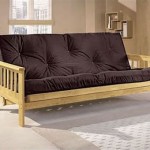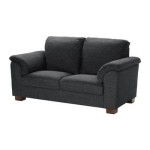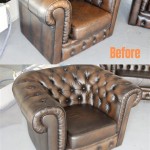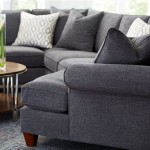The Enduring Appeal of the White and Blue Sofa
The white and blue sofa represents a significant design choice, blending neutrality with a refreshing vibrancy. This combination offers versatility and can be implemented in diverse interior styles, from coastal and nautical themes to modern minimalist and even traditional settings. The appeal lies in the contrast; white, as a foundational color, provides a clean and expansive feel, while blue introduces depth, character, and a calming influence.
The selection of a white and blue sofa necessitates considering several factors, including the specific shades of white and blue, the material used for upholstery, the sofa's style and dimensions, and the overall context of the room in which it will be placed. Each of these elements contributes to the sofa's visual impact and its compatibility with the existing decor.
The psychological impact of these colors is also a consideration. White is often associated with cleanliness, purity, and spaciousness. It reflects light effectively, making rooms appear brighter and more open. Blue, conversely, evokes feelings of tranquility, peace, and stability. The combination of these two colors can create a balanced and harmonious atmosphere, conducive to relaxation and social interaction.
Choosing the Right White and Blue Combination
The specific shades of white and blue chosen for the sofa significantly impact the overall aesthetic. White is not a monolithic color; variations range from bright, stark whites to warmer, off-whites with subtle undertones of cream or beige. Similarly, blue encompasses a wide spectrum, from pale, ethereal sky blues to deep, saturated navy blues. The selection should complement the existing color palette of the room and the desired mood.
For example, a bright white sofa paired with a light, airy sky blue can create a fresh and inviting coastal aesthetic. This combination is particularly well-suited for spaces with ample natural light and light-colored walls. Conversely, an off-white sofa with a deep navy blue can create a more sophisticated and formal atmosphere. This pairing works well in spaces with darker walls or substantial wooden furniture.
Consider the undertones of the white and blue shades. A white with warm undertones (slightly yellow or beige) will pair better with blues that also have warm undertones, such as turquoise or teal. A white with cool undertones (slightly gray or lavender) will complement cooler blues, such as icy blue or navy. Maintaining consistency in undertones is crucial for visual harmony.
The pattern and texture of the fabric also contribute to the overall effect. A solid white sofa with blue throw pillows can create a simple and versatile look. A sofa upholstered in a blue and white patterned fabric, such as stripes, floral prints, or geometric designs, can add visual interest and personality. The texture of the fabric, whether smooth and sleek or textured and cozy, also contributes to the sofa's tactile appeal and overall aesthetic.
Furthermore, the distribution of white and blue on the sofa matters. A predominantly white sofa with blue accents, such as piping, buttons, or decorative pillows, can create a subtle and understated look. A sofa with a more balanced distribution of white and blue, such as a striped or patterned design, can create a bolder and more visually dynamic effect.
Material Considerations for White and Blue Sofas
The material used for upholstering a white and blue sofa is a critical factor to consider, influencing both its aesthetic appeal and its durability and maintenance requirements. Various materials offer distinct characteristics, each with its own advantages and disadvantages.
Cotton is a popular choice for upholstery due to its affordability, breathability, and soft texture. However, cotton is also prone to staining and wrinkling and may not be the most durable option for high-traffic areas. Look for cotton blends that incorporate other fibers, such as polyester, to improve durability and stain resistance.
Linen is another natural fiber that offers a relaxed and elegant look. It is known for its breathability and natural texture, which adds a touch of sophistication to any space. However, linen is also prone to wrinkling and may require professional cleaning. Consider using linen blends or pre-washed linen to minimize wrinkling.
Polyester is a synthetic fiber that is highly durable, stain-resistant, and easy to clean. It is a practical choice for families with children or pets. Polyester fabrics can mimic the look and feel of natural fibers, such as cotton or linen, while offering superior performance and longevity.
Microfiber is a synthetic fabric that is known for its softness, durability, and stain resistance. It is a popular choice for upholstery because it is easy to clean and maintain. Microfiber fabrics are available in a variety of textures and colors, making them a versatile option for different interior styles.
Leather offers a luxurious and durable option for upholstery. It is resistant to wear and tear and develops a unique patina over time. Leather is available in various colors and finishes, from smooth and supple to textured and distressed. However, leather can be more expensive than other materials and may require special cleaning and conditioning.
The choice of material should also be guided by the intended use of the sofa. For a formal living room that receives infrequent use, a delicate fabric such as linen or silk may be appropriate. For a family room or den that is used daily, a more durable and stain-resistant material such as polyester or microfiber is recommended.
Incorporating a White and Blue Sofa into Your Interior Design
Integrating a white and blue sofa effectively into an interior design scheme necessitates careful consideration of the surrounding elements. These include wall color, flooring, furniture, and accessories. The goal is to create a cohesive and harmonious space where the sofa complements the existing decor.
Wall color plays a vital role in setting the tone of the room. Light and neutral wall colors, such as white, cream, or gray, provide a versatile backdrop that allows the white and blue sofa to stand out. These colors create a bright and airy atmosphere, enhancing the spaciousness of the room. Darker wall colors, such as navy blue or charcoal gray, can create a more dramatic and intimate setting. However, using dark colors requires careful consideration to ensure that the room does not feel too small or oppressive.
Flooring can also significantly impact the overall aesthetic. Light-colored hardwood floors, such as oak or maple, create a warm and inviting atmosphere that complements a white and blue sofa. Dark-colored hardwood floors, such as walnut or mahogany, offer a more sophisticated and formal look. Area rugs can be used to define the seating area and add visual interest.
Furniture selection should be aligned with the style and scale of the sofa. Wooden furniture with clean lines and a minimalist design complements a modern white and blue sofa. Traditional furniture with ornate details and a classic silhouette pairs well with a more traditional white and blue sofa. Coffee tables, side tables, and lamps should be chosen to complement the sofa's style and color scheme.
Accessories, such as throw pillows, blankets, and artwork, can be used to add pops of color and personality to the room. Blue and white throw pillows create a cohesive look that ties the sofa to the rest of the decor. Colorful artwork and accessories can add visual interest and prevent the room from feeling too monochromatic. The use of metallic accents, such as gold or silver, can add a touch of glamour and sophistication.
Consider the overall style of the room when selecting accessories. For a coastal-themed room, incorporate nautical elements such as seashells, rope accents, and driftwood. For a modern minimalist room, opt for simple and geometric designs. For a traditional room, choose classic patterns and textures.
Lighting is also a crucial element of interior design. Ample natural light enhances the brightness and spaciousness of the room. Artificial lighting, such as lamps and overhead fixtures, can be used to create ambiance and highlight specific areas of the room. Layered lighting, which combines ambient, task, and accent lighting, can create a more dynamic and inviting atmosphere.
Ultimately, the key to successfully incorporating a white and blue sofa into an interior design scheme is to create a balanced and harmonious space that reflects personal style and preferences.

Image Result For White Walls Blue Sofa Wohimekoration Wohimmer Design Blaues

Blue And White Living Room With Cobalt Sofa Striped Blinds Decor

Blue Living Room Sofas Accented With White And Pillows Sit On A Wool Ru Couch Navy Sofa Decor

Blue Sofas Accented With White Fringe Pillows Sit In An L Formation On A And Wo Couch Living Room Decor

Blue And White L Shape Sofa Set For Home

Blue Sofa With White Piping Design Ideas

Sofa Design For Living Rooms Stylish Comfortable Options

Blue And White Decorating Ideas For Your Home Jane At Living Room Inspiration Decor

Modern Interior Of Living Room With Blue Sofa On Wood Flooring And White Wall Emptry 3d Rendering Stock Ilration Adobe

How To Decorate With A Blue Sofa Interior Design Advice
Related Posts








